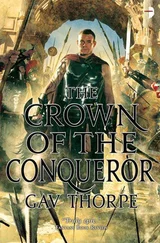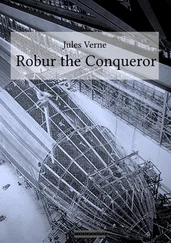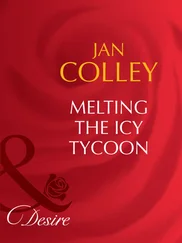There may well be a simple explanation for his fondness for this piece of jewellery: it was the first thing he remembered. His mother must have worn it a lot when he was little. She had been given the brooch, a so-called ‘round brooch’, as a wedding present from Aunt Laura, the goldsmith. The surface was completely covered in an intricate tracery of ribbons that twined around one another, interlacing and seeming to form lots of S’s or figure eights. ‘It looks like a gigantic knot that hasn’t been tightened,’ Jonas would say, fingering it. This silver brooch was absolutely the most beautiful thing he’d ever seen — much more beautiful than the aforementioned clock workings on top of the chest of drawers. That little shield glowed, not outwardly, but inwardly, with a secret and powerful lustre. In his imagination he thought of it as a weapon, a disc that, if one were to hurl it out into the cosmos, would set momentous processes in motion. For Jonas, in terms of latent power the brooch was a miniature atom bomb.
Jonas is on his hands and knees, gazing down into the hole laid bare by the dislodged rock. And what he sees there resembles the design on his mother’s brooch: a coiling mass of ribbons. It’s like looking down into the nerve centre of the Earth, he thinks. Which is not so surprising, since Jonas is staring straight down onto a huge ball of snakes, nestling between the roots of the fir tree, possibly as much as five feet down. He can see it quite clearly, though, as if at the end of a narrow tunnel; an exceptionally large winter nest, containing at least fifty, maybe a hundred, adders — probably ring-snakes and slow-worms too, and even lizards and toads. All twined together in an enormous, tangled ball. Nature’s very own clove hitch.
Jonas thought they were still deep in their winter sleep, but then he noticed that some of them were moving ever so slightly: this was obviously the day when they were going to wake up, now that the temperature had risen enough for the warmth to seep as far down as the snakes. Fascinated, Jonas knelt there, observing the ball of reptiles slowly coming to life. Just for a moment he considered running home to fetch the canister of petrol that was kept in the caretaker’s shed, pour it over the nest and set light to it: create a living ball of fire. But why would he do that? These were timid creatures; they wouldn’t do him any harm.
For ages Jonas sat there, seized by a sort of awe, watching this tangle of reptiles gradually stirring. He could make out the zigzag stripe along the backs of the adders, a pattern within a pattern. Some, presumably males, began to break away from the ball, wriggled sluggishly and silently up the tunnel, along passages that Jonas could not see. And at that same moment he realized that the ball of snakes reminded him of that recurring dream of his. He tried to pursue this thought but gave up. It fitted and yet did not. As a grown man Jonas Wergeland would be struck by the thought that on that spring day he had been confronted with an image of his own vast multitude of unrealized lives.
He didn’t say a word about any of this when he returned to the campfire and his parents, with his trousers caked in muck. ‘Poor Jonas — looks like he’s seen a wood nymph,’ said Chairman Moen, handing him a sausage wrapped in a slice of bread. Jonas sat down next to his mother, felt his hand trembling slightly as he took the cup of orange juice she poured for him.
It remained his secret, that spring day and that sight. Little did Jonas know what it would lead to. In any case, and thanks to the silver brooch, the ball of snakes seemed not so much frightening as precious. Jonas remembered it as a pattern, thought of it as a treasure. A jewel deep in the ground. A living jewel. Something swirling round and round, almost hypnotic.
It wasn’t that Jonas Wergeland forgot that spring day in the forest, but it would be a long time before he could, so to speak, learn from it. To show you what I mean, allow me to remind you of the programme on Sonja Henie, one of the twenty-odd chapters in that masterpiece, Thinking Big , Jonas Wergeland’s epic television series on Norwegians who had won themselves a place in the world consciousness, whose names were bywords, rich in associations, in the international vocabulary.
Jonas Wergeland not only scored the highest viewer ratings ever recorded in Norway, he also, and much more importantly, achieved the highest viewer intensity. Expectations were always great, so to begin with — until they were won over, that is — people were a little disappointed with his portrait of Sonja Henie. The programme contained no facile, sarcastic remarks about her father, the colourful and ambitious Wilhelm Henie, said nothing about those three incredible Olympic Golds, the ten world championships, the crowds at the Eastern Railway Station and the Royal Wharf when she came home to Oslo, nothing about her ‘Heil Hitler’ salute to the Führer and her refusal to help Little Norway at the start of the war, nothing about Tyrone Power, nothing about the triumphant ice show at the Jordal Amfi Arena, nothing about two broken marriages, expensive mink coats, flamboyant jewellery, problems with alcohol, not so much as a word about the fashionable house on Hollywood’s Delfern Drive and the parties held there, with swans carved out of blocks of ice in the swimming-pool and orchids flown in from Hawaii. Jonas Wergeland produced an all but silent programme, a programme that focused, basically, on just one thing: skating. With skating as dance, as acrobatics, as — yes, beauty. It was a scintillating ice-blue programme. ‘It sent shivers down my spine like some eerie, yet beautiful, sight,’ as one reader’s letter put it. And in case you have not guessed, Professor, this too has a bearing, of course, on the inconceivable factor round which we keep circling: a dead wife.
Originally, Jonas Wergeland had intended to build the key scene around a training session at Frogner Stadium, but instead he decided to set this scene — a fictitious one, naturally — on a tarn, a little lake in the forest, where the atmosphere was that much more magical. The camera captured an image of a clear winter’s night with stars reflected on the glassy blue ice. Jonas commenced with a close-up of the skates, showing how forlorn they looked — a pair of battered skates, abandoned on the ice. Then he showed them being slipped onto two feet, the laces tied, and the transformation, as if they had been invested with spirit, before — steel blades flashing — they exploded into a series of turns, inscribing, as if by magic, an enormous ‘S’ on the ice. The camera focused tightly on the legs the whole time, on the skates, on the blade slicing through the ice, etching out markings, figures, exercises from the world of the compulsory programme: Mohawks, reverse Mohawks and double Mohawks, snaking curves and loops. The camera pulled up to reveal that the tarn was a circle upon which Sonja’s dancing had etched flourishes and arabesques, an exquisite pattern; carved a gigantic, glittering brooch out of the very countryside of Norway.
This programme had a strikingly erotic feel to it, distinctly at odds with the image of the girl with the baby-doll face. For the close-ups of the finer techniques of figure skating, they used the top female figure skater in Norway at that time. But the actress Ella Strand, who played all of the series’ heroines, also did her bit, in a wig which bore a passing resemblance to Sonja’s blonde curls, and with her own natural hint of a snub nose — as luck would have it she had done figure skating herself as a girl, and still retained some of her old skill. Jonas had no scruples about making the most of her womanly silhouette, the line of her bust and her long legs, got her to wear a simple, tight-fitting dress with a short skirt — one of Sonja’s many revolutionary innovations, as it happens. The camera dwelt on a woman spinning around, ardent and intent, dwelt on her thighs, almost caressing them, caught — with something close to awe — the suppleness that transmitted itself to the blade of the skate and made the ice fly up.
Читать дальше











